The Fascinating And Untold History Of Mince Pies

We may receive a commission on purchases made from links.
Mince pies are a festive treat served in some English-speaking countries. Today, they usually take the form of small, sweet pastry pies that are filled with mincemeat, which is a sweet mixture of ingredients that traditionally includes raisins, currents, and mixed peel. Although hugely popular in the United Kingdom -- the average British citizen eats 19 during the festive period -- mince pies are not as popular in other English-speaking countries. In Australia, for example, mince pies are seen as an extremely divisive Christmas treat. Many Americans haven't even heard of the sweet treat.
As with any food that's been made for centuries, mince pies have a long and fascinating history. The dish has gone through several different iterations and has been the focus of controversies in both the U.K. and the United States. From causing hallucinations to being demonized by governments, mince pies have a fascinating history that stands at odds with their trivial size.
Read more: 8 Chocolate Bars That Are Totally Different Outside The US
Mincemeat Probably Originated In The Middle East
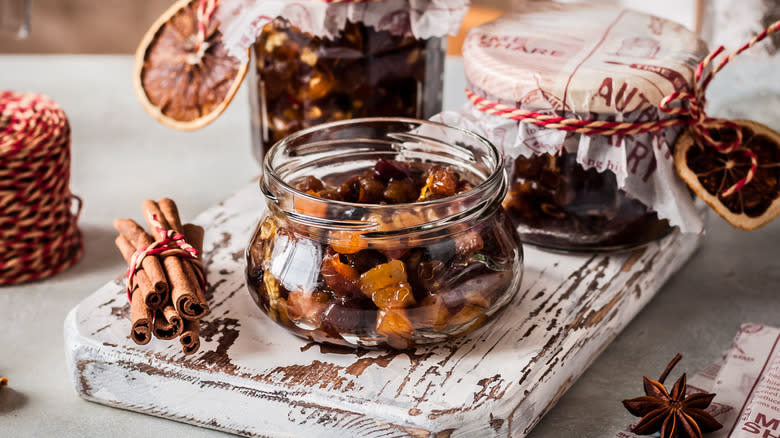
It is generally accepted that mincemeat, the filling that's used in mince pies, was brought to England during the 12th century by Crusaders returning from the Middle East. The version of mincemeat championed by these medieval warriors was quite different from most modern iterations; it was a finely chopped mixture of sweet and savory ingredients including meat, dried fruits, and spices. Such blends remain prevalent in Middle Eastern and African cuisines and are used to stuff pies such as Moroccan pastillas.
Once introduced to England it did not take long for this exotic blend to become established. The earliest recorded recipe containing a mincemeat version is titled tartes of flessh and was included in the 1390 cookbook "Forme of Cury." This recipe includes saffron and sugar combined with pork, rabbit, cheese, and eggs. Later recipes, including one published in 1615 as part of "The English Huswife," are more similar to modern mincemeat thanks to the inclusion of dried fruits. That being said, Gervase Markham, the author of this recipe, also calls for an entire leg of mutton to be added to the mincemeat.
Mincemeat Was A Means Of Preserving Meat
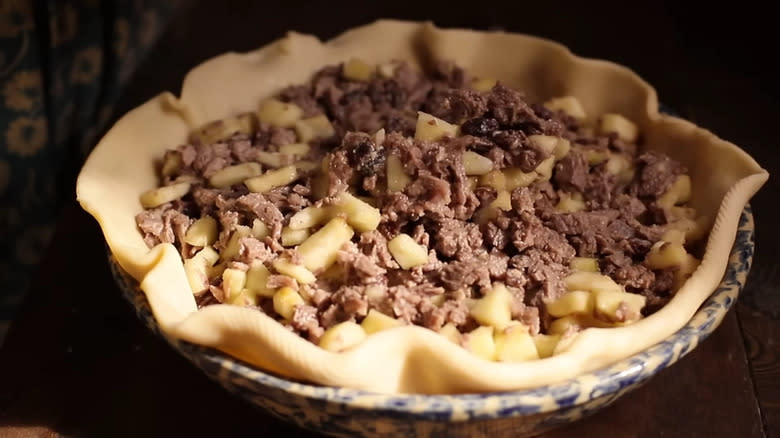
Traditional mincemeat was originally designed as a means of preserving meat. The ingredients, including meat, suet, and fruits were finely chopped before being mixed with a number of spices. Aside from adding flavor, these spices played a vital role in preserving the mixture; many spices boast both antibacterial and antifungal properties that ensure the product has a long shelf life. As a bonus, the heavy use of spices also indicated that the household was wealthy.
Other ingredients added to mincemeat also created an environment which made it difficult for bacteria and fungus to thrive. Chief amongst these were vinegar and wine, both of which increased the mixture's acidity. During the 18th century, sugar started to be added to mincemeat further aiding the preservation process by dehydrating the mixture. Finally, the addition of liquors like brandy also helped preserve the mincemeat; high alcohol levels make it impossible for bacteria to survive.
Aside from the ingredients themselves, mincemeat was also preserved via special storage methods. In the Middle Ages, this was achieved by storing the mixture in containers that were sealed with wax. A low and slow cooking process also helped kill any bacteria prior to the mincemeat being packed and stored.
These Early Pies Were Designed To Keep Fillings Fresh
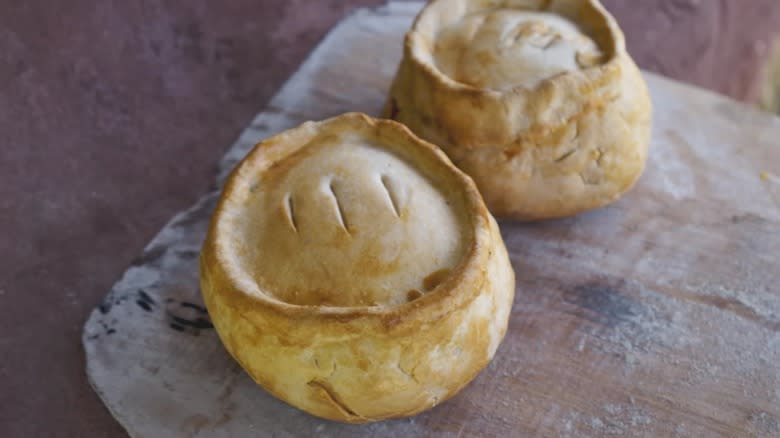
As with most British pies at the time, the dough that surrounded early mince pies was not very palatable. It was made from a simple mixture of flour and water and was designed to encase and protect the filling instead of providing additional flavor and texture. Often, the pastry was incredibly thick and was not even eaten. Instead, it acted as a rudimentary container. To help preserve the filling inside the crust, melted fat was poured into the pie to fill any air gaps during cooking. After cooling, the filling inside these sealed pies could last a year before spoiling.
As the centuries progressed, pie dough developed from just being a means of protecting the filling to becoming part of the dish itself. Adding butter and lard to the dough mix resulted in a dough that was easier to handle and more palatable, resulting in a better taste and ever more handsomely decorated mince pies. During the 15th, 16th, and 17th centuries, the pie dough was often manipulated to represent scenes from the nativity. One of the most popular designs was to make a mince pie in the shape of a manger and create a pastry depiction of the baby Jesus to place on top.
A Mix Of Sweet And Savory Ingredients Were Used
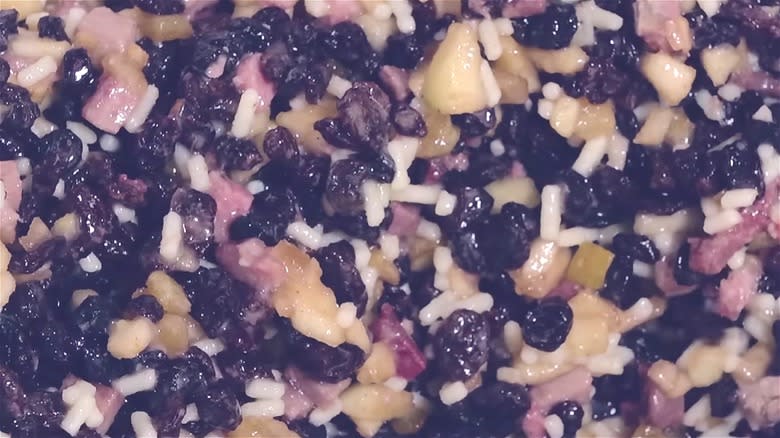
As we have previously mentioned, traditional mince pies were not the sweet, single-serve desserts they are today. Instead, they were a hearty mixture of meat, spices, and fruit that were large enough to feed several people as a main course.
Key to the nature of these early pies was some form of meat. Lamb, veal, cow's tongue, beef, and rabbit were all used as the basis for mince pies. These animal proteins were paired with a variety of spices including mace and pepper. Once mince pies became synonymous with Christmas, cinnamon, nutmeg, and cloves were routinely included as these represented the gifts brought to baby Jesus by the three wise men.
In terms of fruit, both expensive, imported delicacies, including dates and figs, were used alongside readily available, fresh produce such as English apples. Dried citrus peel, which was exotic at the time, was also incorporated into the mix. Of course, a kitchen's ability to make these heavily spiced, exotic pies depended largely on the wealth of the household. Poorer families would not be able to afford the spices and imported fruits necessary for such a dish and would have to make do with simpler fare.
Mince Pies Weren't Originally Associated With Christmas

Initially, mince pies were not seen as a festive treat but rather a pie suited to any celebratory occasion. This was likely due to the number of expensive ingredients called for in the recipes. Mince pies were known to feature on banquets of the biggest occasions; in 1413 a mince pie was even served at the coronation of King Henry V. Mince pies were served at non-festive celebratory occasions as late as the mid-17th century. We know this because a member of the British parliament called Samuel Pepys kept a diary between 1660 and 1669. In one entry he recalls attending a dinner to mark the 18th wedding anniversary of a friend where 18 mince pies were served.
It is not known when mince pies became directly associated with Christmas. During the Tudor period, the pies began to be decorated with festive designs, suggesting that it was between 1485 and 1603 when associations began to develop between mince pies and Christmas. Over the centuries, this link became stronger and stronger, eventually resulting in the modern phenomenon wherein mince pies are served almost exclusively during the festive period.
Oliver Cromwell's Puritan Council Sought To Limit Mince Pie Consumption

It is an oft-repeated myth that Oliver Cromwell banned the British public from eating mince pies on Christmas. This is false. However, the republican governments that ruled England between 1649 and 1660 -- and which Cromwell led as Lord Protector for a time -- did attempt to make Christmas celebrations stricter and more in keeping with their Puritan beliefs.
During this time, the governments cracked down on what they saw as excessive and sinful Catholic celebrations that involved drinking and feasting. As a result, mince pies and other indulgences were treated with disdain by those in power. Fasting and intensive prayer sessions were deemed a more fitting way to spend Christmas day during this period and many people were forced to work on Christmas day. Others had subdued Christmas celebrations or forwent traditional celebrations altogether. As a result, mince pie consumption plummeted.
The restoration of the British monarchy in 1660 saw old Christmas customs return. Feasting was encouraged and many British citizens openly partook in mince pies once again. This is evidenced in Samuel Pepys diary where he made a note of enjoying mince pies on Christmases in years following the restoration.
Mince Pies Came To America Via New England
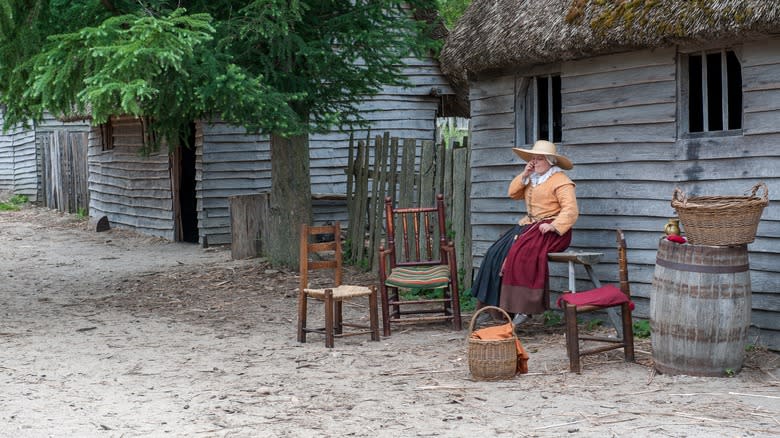
The first British colony was formed in New England in 1620. In the following decades, as many as 20,000 Puritans traveled to the United States seeking the freedom to worship in their own manner. As was the case with England's later Puritan government, these individuals abhorred the Catholic excesses of Christmas and were eager to leave festive feasting -- and its associated dishes -- behind them. Despite this, British colonists still brought mince pie making traditions with them to New England. Soon the dish was well-established on the East coast of America.
As British colonists spread across the country, so did mince pies. This was for two reasons. Firstly, the strength of Puritan beliefs and practices began to wane as more and more people came to America. Secondly, the mince pie was a proven and effective means of preserving food. As a result, it was much needed in the frontier where food security was not always a given. Due to these two factors, mince pies were widely popular across the colonized parts of America before the end of the 19th century.
Mince Pies Were Thought To Induce Hallucinations
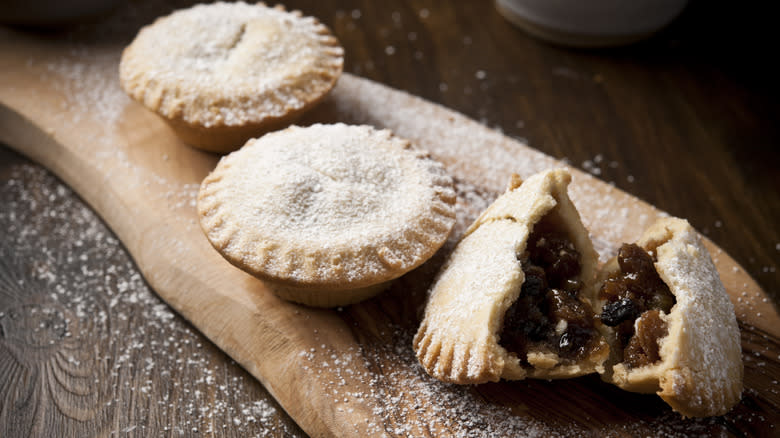
Mince pies were popular throughout the colonization of America and remained so once the entire country had been settled. This does not mean the dish was without controversy. To the contrary, mince pies were often blamed for causing indigestion, which led many Americans to believe that they caused both nightmares and, in extreme cases, hallucinations.
Ludicrous as it sounds, mince pie consumption was occasionally cited as the cause of both death and violent crime. For example, Albert Allen, a man who was charged for the murder of his wife in 1907, made the following statement to the Trenton Times, as reported by the Chicago Reader: "I ate three pieces of mince pie at 11 o'clock and got to dreaming that I was shaking dice. The other fellow was cheating and I tried to shoot his fingers off. When I awoke, I was holding the pistol in my hand and my wife was shot."
Reports of this nature did little to dull the appetite for mince pies even for those in positions of great power and responsibility. In 1909, President Taft even received a 92-pound mince pie from the Pie Bakers' Association of Newark for Christmas, suggesting that concerns over the dish's ability to cause hallucinations and madness were not taken seriously by all.
They Only Became A Sweet Treat During The 18th Century
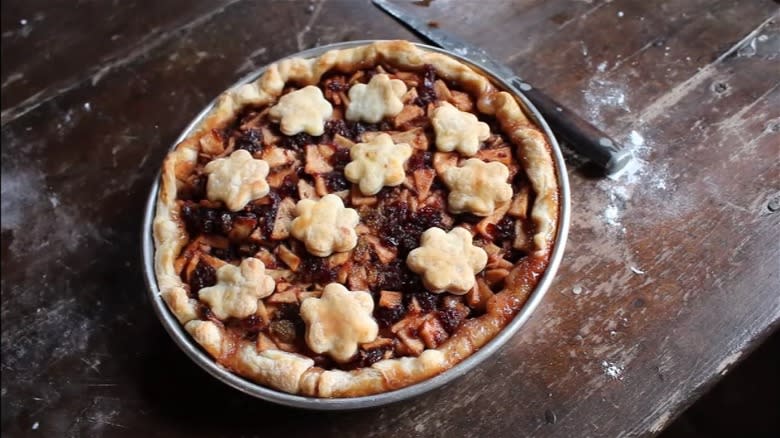
In the years before the 18th century, the flavor of mince pies was dominated by spices, meat, and fruit. As sugar was scarce and incredibly expensive, honey was usually used to sweeten them. This all changed in the 18th century when sugar became cheaper and more available in both the United States and United Kingdom.
Sugar only became cheap due to the widespread use of slave labor on plantations in the West Indies. Even after the abolition of slavery, sugar remained cheap as a result of indentured labor practices. As a result, the sweetener rapidly became a staple. The glut of cheap sugar resulted in many dishes becoming noticeably sweeter, mince pies among them.
An increasing sugar content coincided with a decrease in the use of meat. By the early 20th century meat was removed from British mince pies altogether, although Americans would continue to enjoy meat-filled mince pies for some decades to come.
They Were Once Deemed More American Than Apple Pie
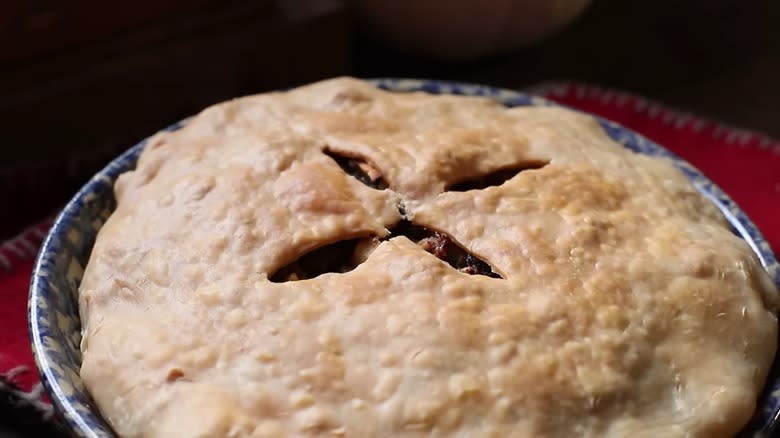
Although it seems bizarre to say it now, mince pies were once deemed the American pie, much in the way that apple pie is viewed today. News outlets labeled mince pies an American institution and many claimed consuming it developed both manly and heroic traits.
During the early 20th century, the symbolic importance of mince pies took on new significance for those American soldiers sent to fight in WWI. The pies, which so many soldiers had fond memories of, soon became a reminder of their distant home country. Consequently, mince pies were included in special ration packs such as those given to American soldiers on Christmas.
There is even a report of a wounded New England soldier requesting a mince pie while recovering in a Scottish hospital. As reported by Vox, the soldier received the pie and said: "Two days ago I was in such misery that I could have welcomed death. Now I feel that America is not so far away as I thought and that I have got to hang on!"
During Prohibition, Boozy Mincemeat Was Eaten

Almost as soon as prohibition came into force in 1920, people began lobbying for popular culinary items to be exempt. Eventually, a court case in 1922 ruled that culinary products could contain liquor, including mincemeat. Unsurprisingly, the alcoholic content of mincemeat subsequently ballooned. It has been reported that canned mincemeat products even reached alcohol percentages as high as 14%, that's the same as some modern wines. By comparison, modern mincemeat products and recipes only call for a small amount of alcohol, which is very unlikely to cause inebriation.
Those looking to get drunk from mincemeat during prohibition were best served eating the filling straight out of the can. This is because a great deal of the alcohol would cook off during the baking process. Of course, a larger problem for the authorities was that a large proportion of the alcohol slated for mincemeat production actually ended up on the black market. As with many aspects of prohibition, these mincemeat related issues were only resolved once the 18th Amendment was repealed.
Mince Pies Fell Out Of Favor In America Post WWII
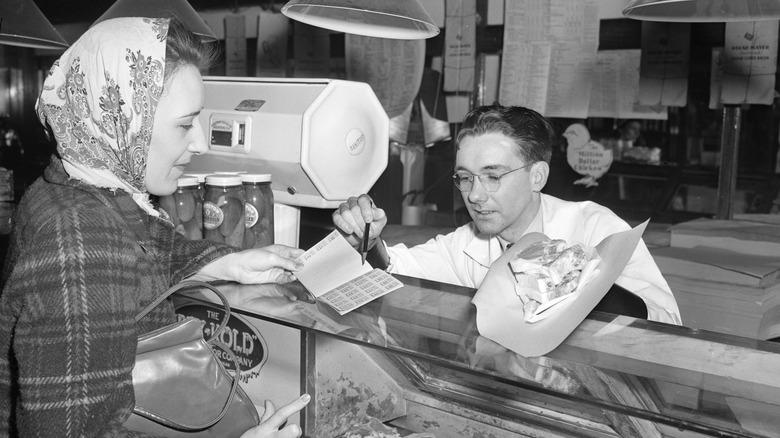
Today, very few Americans partake in mince pies no matter what time of year it is. The viewpoint of most Americans was summarized by catering director Mitchel London in a 2004 interview with The New York Times: "Why doesn't anyone make mince pie anymore? I'll tell you why. Because nobody likes it. I don't like it, and I'm a baker." It has been nearly 20 years since this interview took place yet an American mince pie renaissance looks just as unlikely to happen now as it did then.
Mince pies seemingly disappeared from the American table during WWII, never to return. It is not known exactly why the dish fell from favor although it has been postulated that meat rationing played a part. Its also thought that the technologically driven change in American eating habits that occurred in the decades following WWII also had an effect.
Traditional Mincemeat Is Still Used By Some Black American Communities
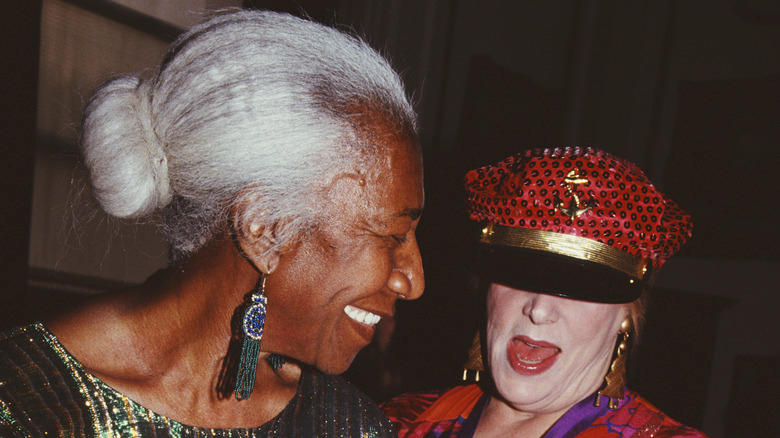
In the United States, traditional mincemeat is not as popular as it once was. However, some Black communities continue to prize the sweet and savory ingredient. Food writer Angela Burke even stated in an Eater article that the old fashioned, meat-filled version of the ingredient is "a fixture in Black American foodways."
Although noting that the ingredient has Asian and African roots, Burke indicates that mincemeat's popularity in some Black communities is due to it being championed by several prominent Black food personalities. These include Ebony Magazine's first food editor, Freda DeKnight. Having written columns on mincemeat, DeKnight included a recipe for traditional mince pies in her hugely impactful 1948 cookbook "Date with a Dish."
The great Edna Lewis also produced multiple recipes for traditional mince pies, one of which was featured in her seminal work "The Taste of Country Cooking." In a 1992 article for The Washington Post, Lewis mentions that traditional mince pies were one of the dishes served at family Christmases when she was a child. In another article, she describes mince pies as a cornerstone of Southern culture. Thanks to the work of these luminaries, the tradition of meat-filled mincemeat -- and meaty mince pies -- has not been completely forgotten in the U.S.
Read the original article on Daily Meal.

